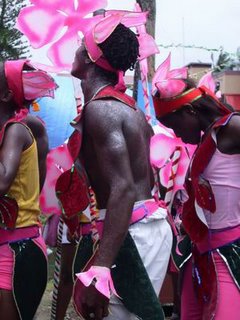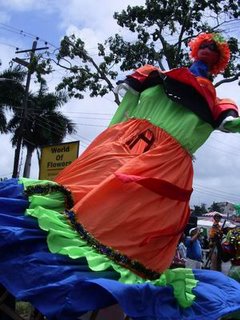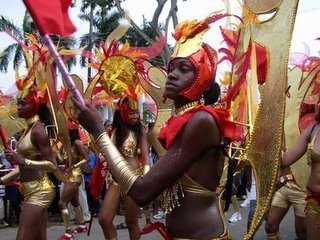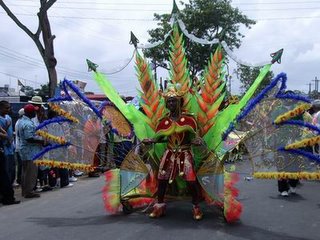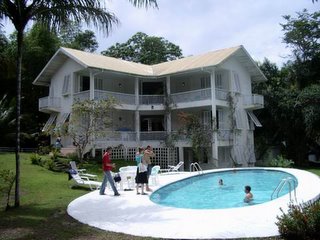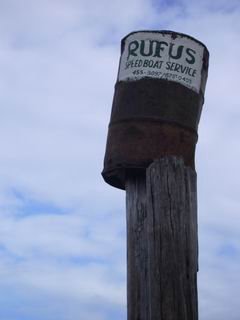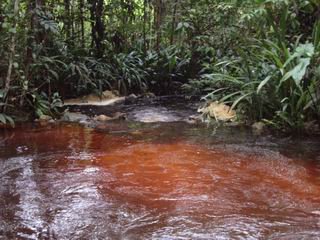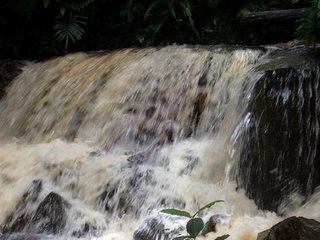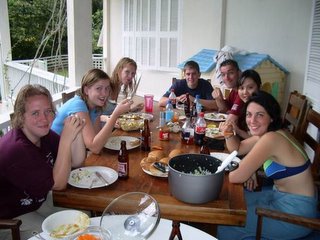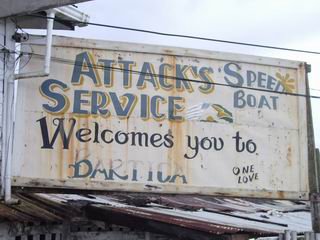先週の金曜日にVSOの教育分野で活動している人達の為のワークショップがあり、私もそれに参加してきた。これは同じ分野で働いている個人の連携を促進しVSOガイアナのプログラム活動案をより強めて行こうと始まった試み。
公式な統計によるとガイアナの識字率は90パーセントとなっている。でも現実はそれに程遠いということだ。確かに義務教育は無料で学校に通う子供たちの割合は90パーセント近いだろう。でも問題なのは学校に毎日通っても読み書きを覚えられない子供が多いということ。実際生徒との接触のあるボランティアの人の話だと推定で半分位がまともに本を読めないのではないかと言っていた。
字が読めないと教科書が読めないので他の教科の学習もままならない。識字問題は深刻である。問題点は色々あり、試験に重点を置いた詰め込み式教育制度(日本人には耳の痛い問題)や適切な学校設備や教材の不足、低賃金で働いている教師の質やモチベーション欠落や親の子供の教育への不参加などである。私がニーズ調査で訪れた学校を例に取ってみると例えば学校に図書室と書いてるある部屋があり、入ってみるとそこはただの教材置き場ということが多かった。科目毎の生徒一人一人の教科書がないので、共有しているのだ。学校に印刷機やコピー機もないので副読本などは教師が黒板に書いたものを写して学習している。学んで理解するというよりは一日の大半を黒板に書いてある内容をノートに写すことに費やされているようだ。
私の子供時代を振り返ると本当に恵まれていたと思う。小学校の図書室には読みきれないほどの本があり週末には地域の図書館に通って本を読むこともできた。本の中に暮らしていたと言えるほど読書好きだった。私の場合は勉強を疎かにするほどだったので読書は利点ばかりだとは言い切れないが、理解力や想像力道徳などの他の教科ににも欠かせない能力を養うことができるので言わずも知れず子供の発達には不可欠。でもガイアナでは学校に通っていても読書はおろかまともに字も読めない子供がたくさんいるのだ。
こんな教育制度を改革する為に世界銀行が他の途上国でも行っている
BEAMS (Basic Education Access, Management Support) というプロジェクトがガイアナでも開始された。その中で識字問題は柱の一つとなっている。先述のVSOのワークショップでこのプログラムの責任者のプレゼンがあった。識字教育はPhonics といって一つ一つのアルファベットから派生するすべての発音、所謂発音記号を用いた方法が主流となり始めているということで、このプログラムもPhonicsを基本とした教材を使っている。同じPhonicsが繰り返し出てくるごく単純な薄い本を何冊も用いる。これは1冊読み終えた時に子供が達成感を感じられるようにしている。とても興味深い内容だった。このPhonicsについては次回のワークショップで詳しく勉強するのでまた書きたいと思う。
Last week Friday I attended a VSO workshop for those who work in the education sector. This is to strengthen the program area by all the volunteers working together.
The official statistics claims Guyana’s literacy rate to be 90%. However, the reality is far from this. Certainly the public education is free, and the percentage of children who go to school should be close to 90%. The problem is even though they go to school everyday, many of them still do not learn how to read and write. According to some volunteers who actually work with children in school, it seems like almost half may not be literate.
If you can’t read and write, you never learn. Literacy is a serious issue in the country’s development. There are various factors: memorization and information cramming method focusing the examination (common entrance exams), lack of appropriate school facilities and materials, untrained and low salaried-teachers who are not necessarily motivated to teach, parents not participating in their kids’ education and so on. I can take as an example some of the school that I visited during my needs assessment research. In some schools, rooms that say “library” turned out to be just a place where they store their textbooks. They don’t have a printer or photocopy machine, so kids have to copy what teachers write on the blackboard. Rather than learning and understanding, these pupils spend most of their day simply copying what is on the board to their notebooks.
If I look back my childhood, I realize how lucky I was. The library of my primary school had too many books for me to read. On weekends, I could go to the library in my neighborhood. I loved reading, and I was living in books. It is needless to say the benefits of reading, such as comprehension, imagination, creativity and morality, which are important in other subject areas and are essential abilities. In my case, I was neglecting studying because of my reading, so I can’t say it’s all benefit though….. Guyana has many students who go to school but can’t read letting alone enjoying reading books.
To reform such education system, World Bank started implementing BEAMS (Basic Education Access, Management Support) in Guyana along with other developing countries, and achieving basic literacy is one of the main objectives of this program.
In the VSO workshop, we had a presentation by the people responsible for this project. They talked about utilizing “phonics” in their approach, which are sounds that come with each alphabet. This is becoming mainstream now, and BEAMS employs this method as well. It applies thin and simple booklets/ workbooks that repeatedly use same phonics, and it aims at children feeling a sense of accomplishment after reading one book. It was extremely interesting. We will take up this issue again further in detail in the next workshop, so I will write more about it.
